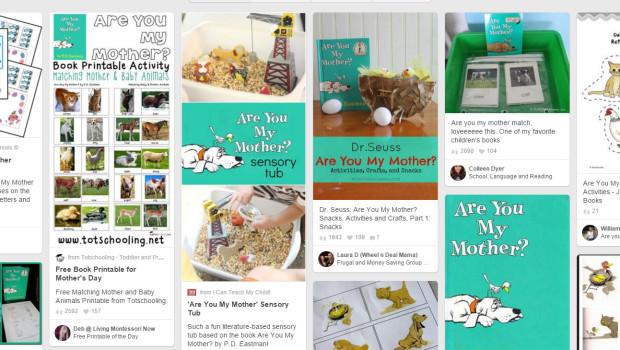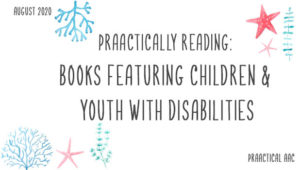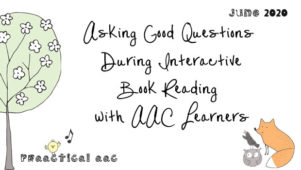PrAACtically Reading with Karen Natoci: Are You My Mother?
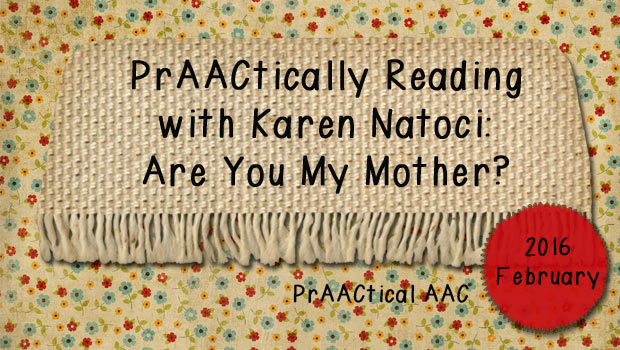
 We get many requests to do more posts on providing AAC supports to children who use alternative access. Karen Natoci must have read my mind when she wrote this month’s PrAACtically Reading post because she gave us lots of ideas for shared reading with a child who is learning to use eye gaze for communication. The book that she chose is a P.D. Eastman classic that many of us remember from our own childhoods. Happy reading!
We get many requests to do more posts on providing AAC supports to children who use alternative access. Karen Natoci must have read my mind when she wrote this month’s PrAACtically Reading post because she gave us lots of ideas for shared reading with a child who is learning to use eye gaze for communication. The book that she chose is a P.D. Eastman classic that many of us remember from our own childhoods. Happy reading!
Shared Reading Using Eye Gaze
Book: Are You My Mother? by P.D. Eastman
CORE Words to practice using: you, want, where, look, more, no, go, like, oh no! mine
FRINGE Words to practice using: Animal names, mother, snort!!
I am happy to share this lesson plan to describe the integration of early eye gaze and switch use to foster engagement while reading the delightful book, Are you My Mother? (authored by P.D. Eastman). Today, I chose to focus on the modeling of eye gaze and single switch use for the beginning communicator and emergent reader. To do this, we created an eye gaze board made of foam core to place upon a page in the book during this reading experience. If you already have an eye gaze board, that will work just fine! You also can attach about four of the CORE words to each corner of the book itself! Another item that I found helpful was black art board (scratchboard) purchased from an art supply store. Here is a link to this product that you see in the photograph.
I affixed 5 or 9 basic CORE vocabulary words + “no” to foster the early use of self- directed eye gaze on the eye gaze or art board. I just used scotch tape, you do not need to use Velcro. I would also suggest NOT laminating these symbols because of the glare they produce.
You can see photos here.
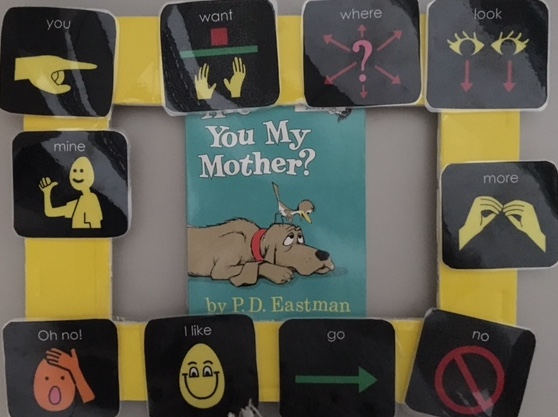
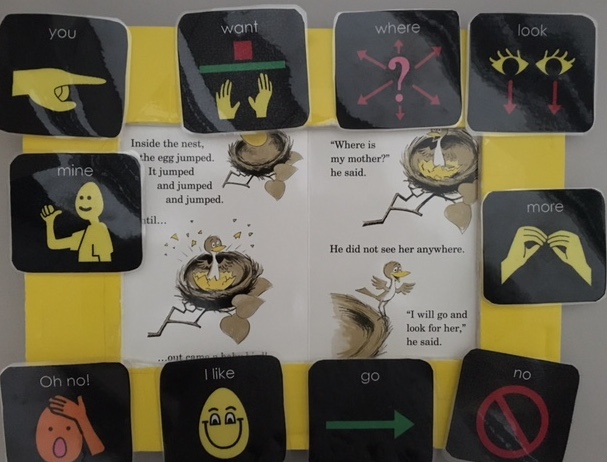
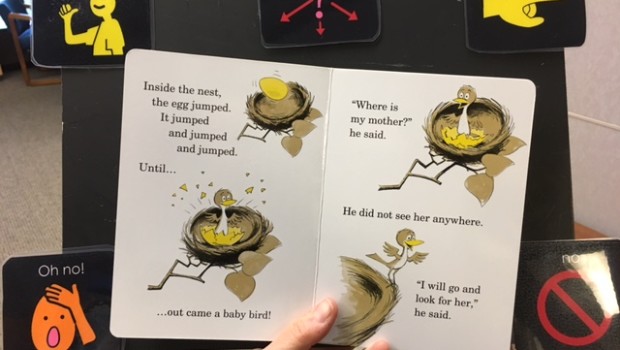 For modeling AAC, I recommend that the reader and child should sit together side by side as this may be an easier way to demonstrate eye gaze (joint attention to symbols) at this emergent level, and may deter the overuse of staring into the reader’s eyes (so commonly seen in the RETT population). For interaction, the adult would need to shift positions to face the child so that he/she can determine where the child is looking.
For modeling AAC, I recommend that the reader and child should sit together side by side as this may be an easier way to demonstrate eye gaze (joint attention to symbols) at this emergent level, and may deter the overuse of staring into the reader’s eyes (so commonly seen in the RETT population). For interaction, the adult would need to shift positions to face the child so that he/she can determine where the child is looking.
While reading the book, try to look at, point, or illuminate a core word that goes with the text. There may be one or two per page. For example, when reading “Are you my mother?” You can re-read the page highlighting, pointing or using your OWN eye gaze/lean toward YOU + MY and have the child add, MOTHER using their device. When the baby bird sees another animal or “the big thing” you can say LOOK by looking, pointing or illuminating that symbol. You can pause, take time and model saying something off script such as “uh-oh” or “like.”
If your child is learning to use a voice output device (such as through an access switch connected to a BIG Mack mac or Step by Step,) it is fun to consider recording the word “MOTHER” and wait for the child to finish some of the sentences while you are reading.

Another idea might be to record different types of “SNORTS!” into a big step by step for your child to express! It is amazing how motivating noises such as “snorts” can be!
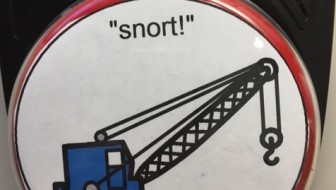
I added other suggestions within the lesson plan, which you can download here.. Happy reading!
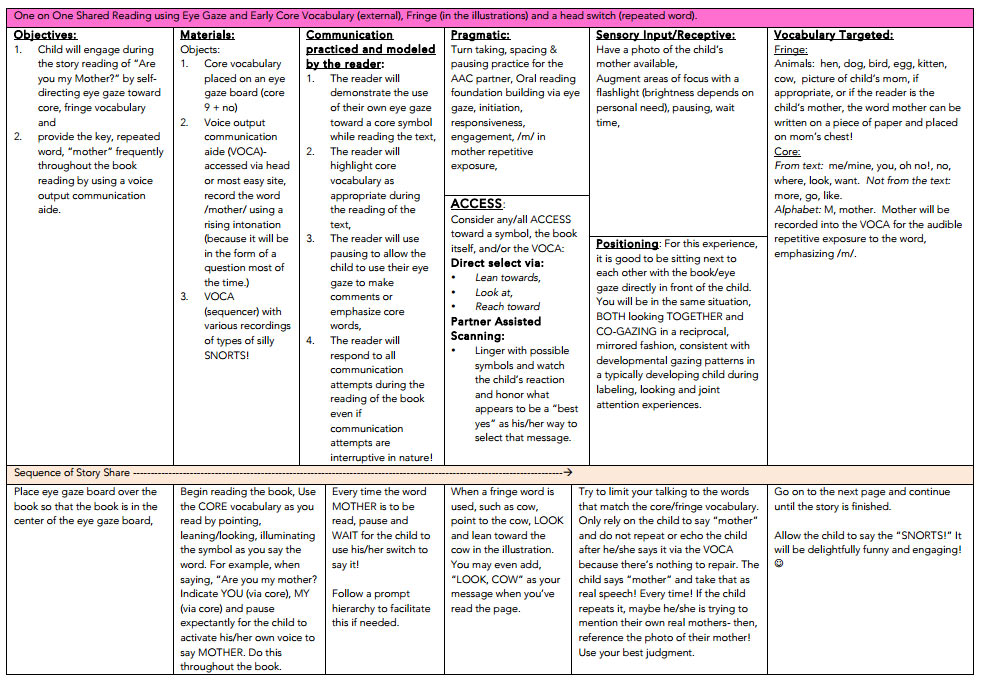
===================================
Many thanks to Karen for another helpful post!
One more tip: Try searching Pinterest for extension activities, printables, and materials related to this classic book.
Filed under: Featured Posts, PrAACtical Thinking
Tagged With: eye gaze, reading
This post was written by Carole Zangari
